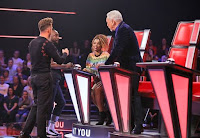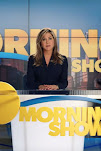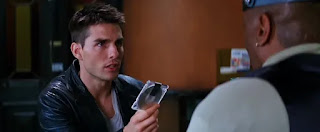THEORY 2: THE TECHNICAL ELEMENTS OF MEDIA LANGUAGE
THE 4 TECHNICAL ELEMENTS OF MEDIA LANGUAGE
- MISE-EN-SCèNE: 'everything within the frame'; all of the elements placed in front of the camera to be photographed, elements include: set design, costume, props, and staging and composition (the 4 elements of mise-en-scène)
- CAMERA: a device for recording visual images in the form of photographs, film, or video signals
- SOUND: something that you can hear or that can be heard
- EDITING: techniques used by film editors to tell stories using video content through importing film footage, organizing shots by scenes and takes, and assembling the pieces to create a compelling story
THE 4 ELEMENTS OF MISE-EN-SCèNE
PROPS
Props, short for 'property', is when an object in the setting has a function within the ongoing action that is often closely linked to the plot of the narrative, or a casual relationship, where if a prop is repeated throughout the narrative, it may become a motif, and connected to a theme or moral of the story
The red balloon, a symbol of Pennywise from the film "IT," who utilizes the balloons as an enticement for his victims, is one of the most well-known movie props. It's possible that the movie diminished the delight that clowns often bring. The clown needs to make use of something really likeable and ordinary, like a red balloon to let you know he's waiting, watching you. It is quite bizarre but extremely powerful. This demonstrates how crucial a role the red balloon (a prop) plays throughout the entire film is
SET DESIGN
Set design is how the setting is being presented
The two types of set designs are realistic and stylistic set designs. A realistic set design represents what it looks like in real life (building of sets or shooting on location). A stylistic set design calls attention to itself for the audience to notice (typically in narrative genres)
The set design in the image above, from the TV show "Friends", looks realistic since the drapes and other accessories, including the furniture, are built-in sets, therefore it is a realistic set design
COSTUME
The costume is the wardrobe choices and make-up that are used to convey a character's status or personality; signifying the setting or era of the narrative, playing important roles in the plot of the film, drawing the eye to a specific character or helping point out the difference between characters or the setting
Once again, we can examine the selection of costumes modified. For instance, the outfit worn in the image above, from the movie "Enola Holmes", indicates that the scene and to be greatly expected, the entire movie, is indeed set in the late 19th century, possibly in the 1980s in England
STAGING AND COMPOSITION
Staging and composition is how elements within the frame have been arranged for a particular effect, including their position within the frame and their relationship with other elements (that can include characters of props) within the frame
By placing the child in the center of the frame while also include symmetrical and balanced surroundings (the walls and doors), the above image from the film "The Shining" effortlessly adds a dramatic touch to the composition. The object in the center serves to either highlight the beauty of the landscape, highlight a significant event, or direct attention to the subject, who is the young child
CAMERA
CAMERA SHOTS (8)
is the view that is seen or filmed through a camera's viewfinder; the composition of key elements within a frame used to support the story or idea indicated in a storyboard
ESTABLISHING SHOT
Establishing shot is used to show setting, and time (often at the beginning) and to avoid confusion when the story shifts. It is also with a purpose of introducing to new scenes and tell the viewer where and when the action is happening, referring to the image from "The Grand Budapest" that is shown above
EXTREME LONG SHOT
Extreme long shot is fixed to show the subject from a distance, or the area in which the scene is taking place to establish a scene in terms of time and place (the character doesn't have to be viewable in this shot)
Here, we can construct a scenario with a character's physical or emotional interaction to the environment and its constituent elements, as well as watch the action being carried out by two characters in this extremely long shot; in the scene above, a fight is taking place, which demonstrates several aspects of the physical and/or emotional relationship
LONG SHOT (OR WIDE SHOT)
Long shot (or wide shot) shows the subject from top to bottom; for a person, this would be head to toes, thought not necessarily filling the frame. The character becomes more of a focus than an extreme long shot, but a long shot tends to still be dominated by the scenery. This shot often sets the scene and the character's place in it
A young girl dressed in red can be seen wandering into the street in the Steven Spielberg film that is displayed above. A POV shot is also used in the wide shot. The girl is the embodiment of purity and vulnerability, caught up in horror
FULL SHOT
Full shot frames the character from head to toes, with the subject roughly filling the frame. The emphasis tends to be more on action and movement rather than a character's emotional state. Full shots im to tell a better story
This scene from "The Godfather Part II" presents two characters in a dramatic ironic manner to excite the audience's curiosity about what will happen next. Two characters are certainly moving toward one of them experiencing a horrific situation. And something about framing them in their entirety heightens the sense of helplessness
MEDIUM SHOT
Medium shot shows part of the subject in more detail (typically frames them from about the waist up). This is one of the most common shots seen in films, as it focuses on a character, or characters, in a scene while still showing some environment
Studying the scene from Jurassic Park, at first sight, it appears like the medium shot is only intended to establish the characters as being lost in the jungle, but it actually does a fantastic job of showing where these guys have been. We are seeing the scene from the waist up, and the specified details seen of their injuries and the worn-out quality of their clothing indicate that they have been involved in some major combat
MEDIUM CLOSE-UP SHOT
Medium close-up falls between a medium shot and a close-up, framing the subject from chest or shoulder up. The idea of a medium close-up shot is that you can still easily register the actor's emotions and facial expressions (the actor's performance) while also retaining/include some of the background. A medium close-up is often used when a scene needs to be covered with standard coverage that doesn’t shock the viewer
The image above, taken from the film "Mission: Impossible," allows us to assess the state of the tense environment while still being able to pinpoint the location and/or surroundings
CLOSE-UP SHOT
Close-up fills the screen with part of the subject, such as a person's head/face, where the emotions and reaction of a character dominate the scene as it is being framed tightly. It is utilised to generate strong emotions, perhaps, to signal something major
When analyzed, a close-up shot might assist in our perception of a character's annoyance with the situation. The image above, which is a close-up from a scene in the film "The Shining," can be used to tell when someone is going insane
EXTREME CLOSE-UP SHOT
Extreme close-up emphasizes a small area or detail of the subject, such as the eye(s) or mouth. Inanimate objects can also be framed in an extreme close-up shot, but everything is based on the scale and size of the object
In "Sherlock Holmes: A Game of Shadows," an extreme close-up shot is used to signal an important sensory moment in a scene. This use of the shot is somewhat intense because, while it lets us know the character is paying attention intently to something, it doesn't reveal anything in the actual frame or shot (merely the character's expression within the scene)
CAMERA ANGLES (6)
the angle of view on the subject as established by the position of the camera to imply meaning, e.g. high angle means that the camera is "looking down" on the subject, low angle means that the camera is "looking up" at the subject
OVERHEAD SHOT
Overhead shot is when the camera is directly above the action (usually used in an establishing shot, but not always) to empower the audience with an objective perspective
An overhead shot, like this one from The Great Gatsby, can be applied to emphasize the subject's tiny size or insignificance while still capturing a lot of landscape information in one frame.
HIGH ANGLE SHOT
A high angle shot is meant to make the subjects look smaller, often indicating a lack of power
The scene taken from the film "Mad Max: Fury Road", the high angle shot is used to signify the power the character holds
EYE-LEVEL
An eye-level shot gives the audience a sense of realism as we see the characters on a 'regular' level (most commonly used)
An eye-level shot is made use of in this scene from Game of Thrones, particularly to give the audience a familiar perspective as the camera is positioned directly at the characters' eye level
LOW ANGLE
Low angle is utilised to make a character appear larger and more powerful (the camera is positioned lower to make things seem bigger)
For instance, taken from the movie "Raising Arizona", a low angle shot is exerted to convey power, or show that they are in charge
UNDERSHOT
Undershot is when the camera is placed underneath the subject, often matched with POV shots if a character is looking up at something
When Jack Torrence is locked inside the pantry, the movie "The Shining" uses an undershot angle to illustrate the character's rising aggression and irrationality
POINT OF VIEW (POV) SHOT
A point of view (POV) shot is to show something from the character's perspective
In the 1978 movie "Halloween," a POV shot is used to convey any emotion the director needs. For example, the scene above shows the viewpoint of "The Bride" toward those responsible for the massacre of her wedding party. Since these people are her targets, one technique to get the audience to sympathize with "The Bride" and her revenge is to see them through her eyes
CAMERA MOVEMENT
a technique that describes how a camera moves about to enhance a story
SOUND
- Diegetic sound: the sound that could logically be heard by characters in the film, sound that would occur in the scene
- Non-diegetic sound: the sound that cannot be heard by the characters but is designed for audience reaction only, e.g. ominous music for foreshadowing, voice-over, etc.
- Ambient sound: the background sounds which are present in a (particular) scene or location, e.g. rain, the ocean, a crowd, an office, or traffic
- Sound effect: an artificially created or enhanced sound presented to make a specific storytelling or creative point without the use of dialogue or music
- Dialogue: a written or spoken exchange of words between one or more characters
EDITING
- Cut: transition from one shot into another
- Cross-cutting: a technique that gives the appearance that two storylines are happening simultaneously
- Dissolve: occurs when the beginning of one shot gradually overlaps the end of another
- Reverse shot: a film technique that involves two characters in the same scene who are filmed separately using different camera angles
- Iris: a transition that involves a circle that increases then decreases in size
- Flashback: a transition that is used to interrupt the present storyline for a brief return to past events
- Fade: where visual and audio elements gradually disappear as new ones take over to suggest a new setting or time
COLOUR
Black: authority, power, overpowering, makes people appear thinner and stylish, implies submission and evil
White: innocence, purity, light, summer, neutral, doctors usually wear white to imply sterility
Red: emotionally intense colour, love, noticeable, red cars are popular targets for thieves, furniture gets attention
Pink: romantic and girly
Blue: Popular and loyalty, opposite reaction is red, peaceful, calm, productive, cold, depressing, good in gyms
Green: improve vision, nature, calming, refreshing. [Dark green]: masculine, conservative, implies wealth, could bring bad luck for fashion
Yellow: cheerful, attention, optimistic, overpowering if overused, concentration, metabolism
Purple: royalty, luxury, wealth, sophistication, feminine, romantic, appear artificial
Brown: solid, reliable, earth. [Light brown]: genuineness. [Dark brown]: wood or leather, sad, wistful


























